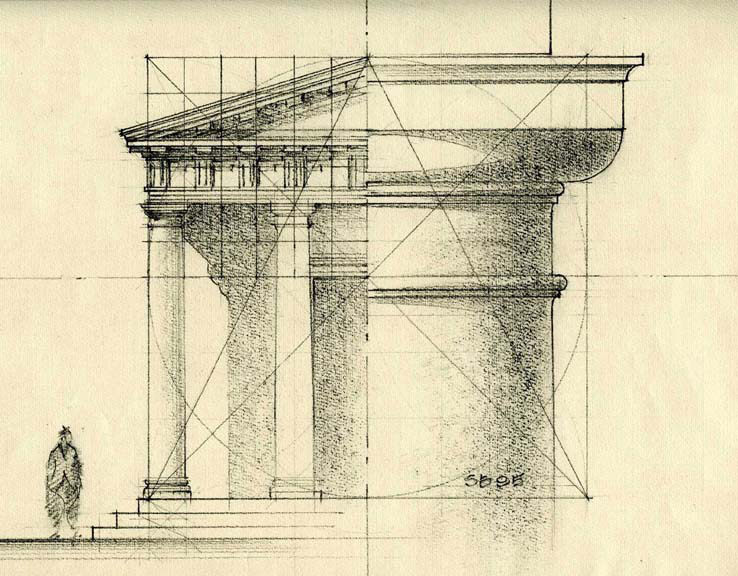Blog
Beauty, Memory, Unity: A Theory of Proportion in Design by Steve Bass in New Orleans

March 6th-7th, 2020
Architect Steve Bass presented a view of the proportional idea based in the ancient philosophical systems of Pythagoras, Plato and later Neo-Platonists. In this view number and geometry, the substance of proportion, are endowed with qualitative, harmonic, life-like properties. These ideas were linked to numerical and geometrical methods used to describe the elements of classical architecture in reference literature such as Vitruvius, Vignola and Palladio. A central theme is the philosophical nature of beauty as a form of the good, beauty’s relation to proportion and its significance in classical art. Such a view of beauty not only fully justifies the study of the classical elements today but could even provide a pathway out of the alienation, anxiety and intentional ugliness of modernism.
The drawing workshop provided an overview of the concept of proportion as a design tool in traditional architecture; presented in the form of lectures and demonstrations. The content included an explanation of the idea of symbolic or qualitative number; an introduction to Pythagorean and Platonic numerical philosophy; the nature of beauty, its relation to number, and its relation to the good; the derivation of the ancient musical octave and its use as a guide to harmony; a discussion of the Golden Section, its mathematics, geometry, relation to philosophy, and particularly its role as a geometrical “logos”; and the connection of all these ideas to the numerical-geometrical canons of classical architecture. These ideas were applied to the historical archetype of the four column portico, through demonstrations using arithmetic, geometric, and harmonic ratio methods of application in pursuit of the beautiful. The course was taken as an introduction to these ideas or as a review for those who have some background with the subject.
DRAWING WORKSHOP LEARNING OBJECTIVES:
The course enabled students to:
1. appreciate the nature of beauty and the role it plays in the pursuit of the good.
2. understand number in a symbolic rather than mathematical sense and how this connects aesthetics to aspects of ancient philosophy.
3. understand the nature of rational ratios, composed of whole numbers, and transcendental ratios such as the Golden Section which are not composed of whole numbers, as an approach to achieving the beautiful in architectural composition.
4. use geometric, arithmetic and harmonic methods of application of proportion for analysis of historical designs and to create new designs that achieve a balanced and harmonious state.
